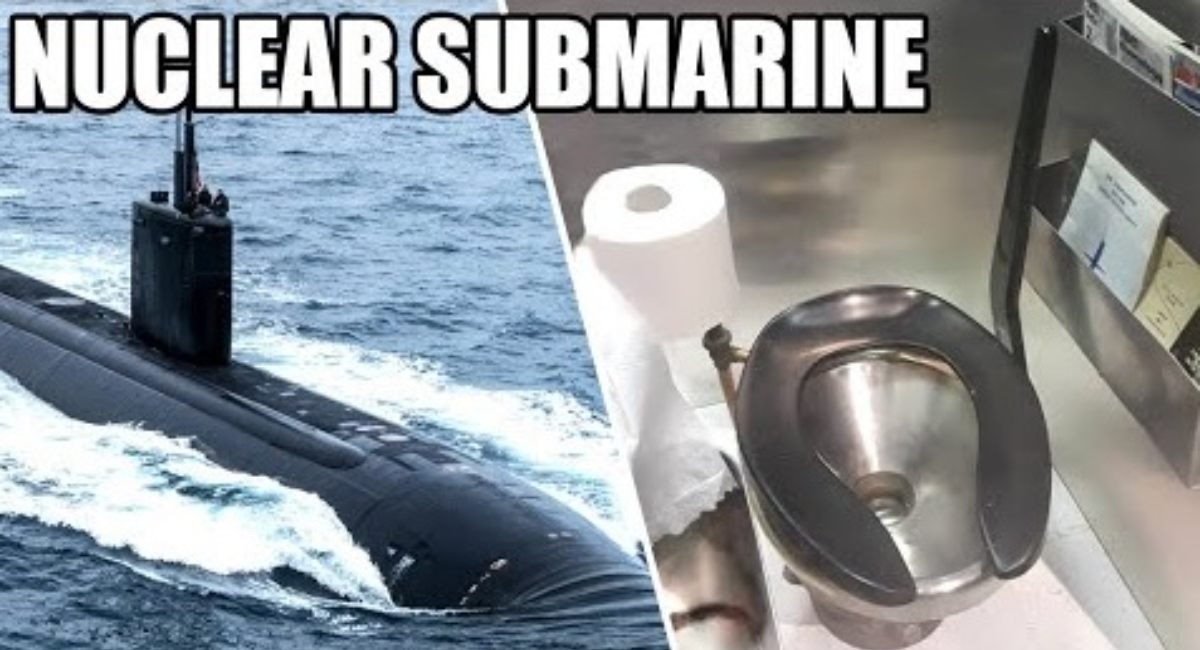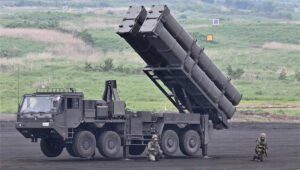‘No showers, no laundry, limited use of the head, no extra use of water. Usually this is when the crew begins to beg for a “Mercy Blow,”’ Dale Rich, former US Navy submariner.

Just like surface ships, the toilet on board a submarine is referred to as its head out of traditional maritime custom.
Compared to their surface cousins, submarines have a much more difficult time dealing with mundane operations including flushing the toilet.
A claim confirmed by Dale Rich, former US Navy submariner, on Quora.
Blowing Sanitaries
Rich explains;
‘Submarines have sanitary tanks that are designed to hold the human waste generated in the heads (shipboard bathrooms in the Navy). These tanks are routinely flushed to the open sea when the boat is in normal operating condition and is usually done when the boat is close to the surface while making routine evolutions at periscope depth. These tanks are emptied by using air stored in the air banks to pressurize the tanks to a pressure that is above the sea pressure exerted on the boat at the depth where the boat is operating. An example would be that if the boat was at 100 feet depth at the keel, the air pressure to remove the waste would have to be above 44psi. This routine procedure is called “Blowing Sanitaries” and is performed by the Machinist gang on the boat.’
Operating in hostile waters
Rich continues;
‘When a submarine is operating in hostile waters, is on a mission to trail an enemy combatant, or is operating at extreme depths, the sanitaries cannot be emptied. There are various reasons for this but the primary reason is that the evolution has the potential to make significant noise and uses vital resources to perform the evolution. If the boat is at extreme depth (below 500 feet) the amount of air needed to remove the waste increases dramatically. (at 500 feet at the keel it would require air pressure to be above 215psi to push the waste from the tank) Air is a vital commodity on a submarine, and might be needed, and better used, to push the submarine to the surface in an emergency rather than being wasted pushing waste out of the sanitary tank.’
Mercy Blow
‘It is not unusual for a submarine to remain in a position where it cannot expose itself for many days at a time. During this time the sanitaries start to fill up, and the heads are restricted. No showers, no laundry, limited use of the head, no extra use of water. Usually this is when the crew begins to beg for a “Mercy Blow.” The officer of the deck is always apprised of the situation and informs the Captain of the problem. Measures are taken to alleviate the situation if possible.
Rich concludes;
‘This is just one more problem that submariners have to deal with, but remember, all of them are volunteers and do the job because they love it!’

Photo credit: Unknown
Un sommergibilista della Marina degli Stati Uniti spiega perché i sottomarini non possono sciacquare il water durante le operazioni in acque ostili.
“Nessuna doccia, nessun bucato, uso limitato dei servizi igienici, nessun utilizzo aggiuntivo dell’acqua. Di solito, in questo momento, l’equipaggio inizia a implorare un ‘Colpo di Grazia,’ spiega Dale Rich, ex sommergibilista della Marina degli Stati Uniti.
Proprio come nelle navi di superficie, il bagno a bordo di un sottomarino è chiamato “head” seguendo la tradizione marittima.Rispetto ai loro cugini di superficie, i sottomarini hanno più difficoltà a gestire le operazioni quotidiane, compreso lo sciacquone del bagno.
Una affermazione confermata da Dale Rich, ex sommergibilista della Marina degli Stati Uniti, su Quora.
Svuotare i servizi igienici
Rich spiega;
“I sottomarini hanno serbatoi igienici progettati per contenere i rifiuti umani prodotti nei bagni (bagni a bordo della nave nella Marina). Gli operatori svuotano regolarmente questi serbatoi in mare aperto quando la nave è in condizioni operative normali, solitamente vicino alla superficie durante le evoluzioni di routine a profondità del periscopio. Utilizzano l’aria immagazzinata nelle banche d’aria per pressurizzare i serbatoi a una pressione superiore a quella esercitata dal mare sulla nave alla profondità in cui sta operando. Un esempio sarebbe che se la nave fosse a 100 piedi di profondità alla chiglia, la pressione dell’aria per rimuovere i rifiuti dovrebbe essere superiore a 44 psi. l gruppo di meccanici a bordo della nave chiama questa procedura di routine ‘Svuotamento dei servizi igienici’ ed esegue l’operazione.
Operare in acque ostili
Rich prosegue;
“Quando un sottomarino opera in acque ostili, è in missione per seguire un combattente nemico o sta operando a profondità estreme, i servizi igienici non possono essere svuotati. Perciò, ci sono varie ragioni per questo, ma la ragione principale è che l’evoluzione ha il potenziale di causare rumore significativo e utilizza risorse vitali per eseguire l’evoluzione. Inoltre, se la nave è a profondità estrema (sotto i 500 piedi), la quantità di aria necessaria per rimuovere i rifiuti aumenta drasticamente.. (a 500 piedi alla chiglia, sarebbe necessaria una pressione dell’aria superiore a 215 psi per spingere i rifiuti dal serbatoio) L’aria è una merce preziosa su un sottomarino e potrebbe essere necessaria, e meglio utilizzata, per far emergere il sottomarino in caso di emergenza anziché essere sprecata per spingere i rifiuti fuori dal serbatoio igienico.”
Colpo di Grazia
“Non è insolito che un sottomarino rimanga in una posizione in cui non può esporsi per molti giorni consecutivi. Durante questo periodo, i servizi igienici iniziano a riempirsi, e l’uso dei bagni è limitato. Nessuna doccia, nessun bucato, uso limitato dei servizi igienici, nessun utilizzo aggiuntivo dell’acqua. Di solito è in questo momento che l’equipaggio inizia a implorare un ‘Colpo di Grazia.’ L’ufficiale di coperta è sempre informato sulla situazione e informa il Capitano del problema. Vengono adottate misure per alleviare la situazione se possibile.”
Rich conclude;
“Questo è solo un altro problema con cui i sommergibilisti devono confrontarsi, ma ricorda, tutti loro sono volontari e fanno questo lavoro perché lo amano!”


![BlueWhale Autonomous Submarine: Advancing Maritime Defense [Video] BlueWhale Autonomous Submarine by IAI ELTA: A stealthy, modular underwater vehicle redefining maritime defense and underwater intelligence.](https://www.spotynews.com/wp-content/uploads/2025/06/BlueWale_Tm_3-300x170.jpg)